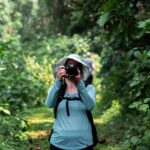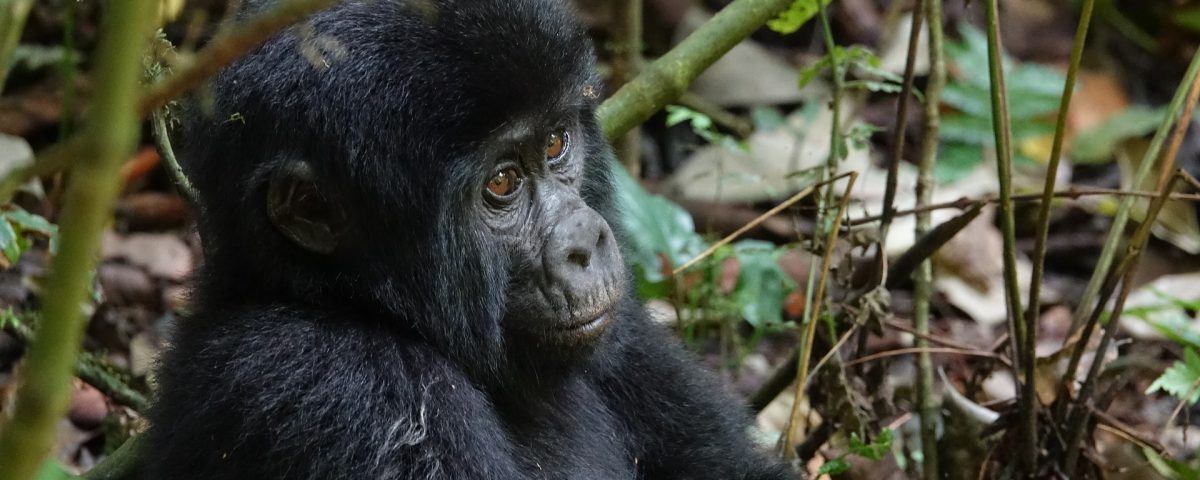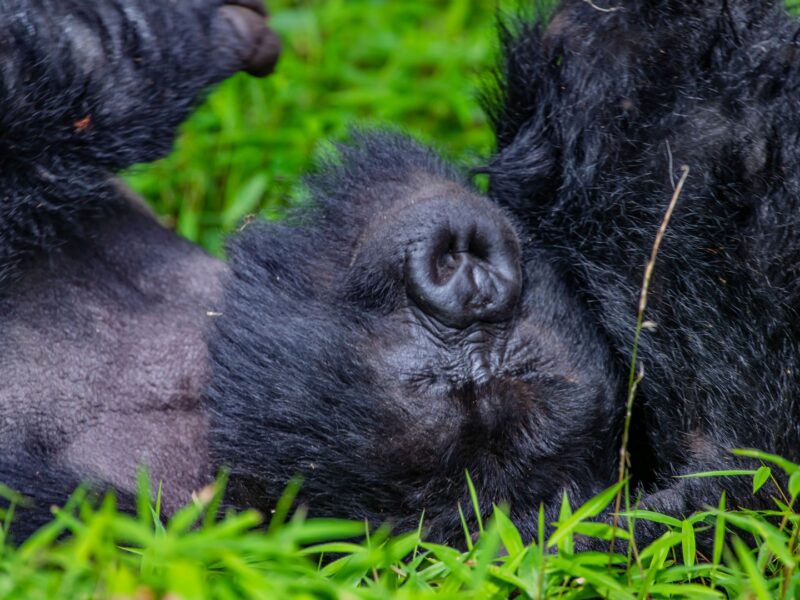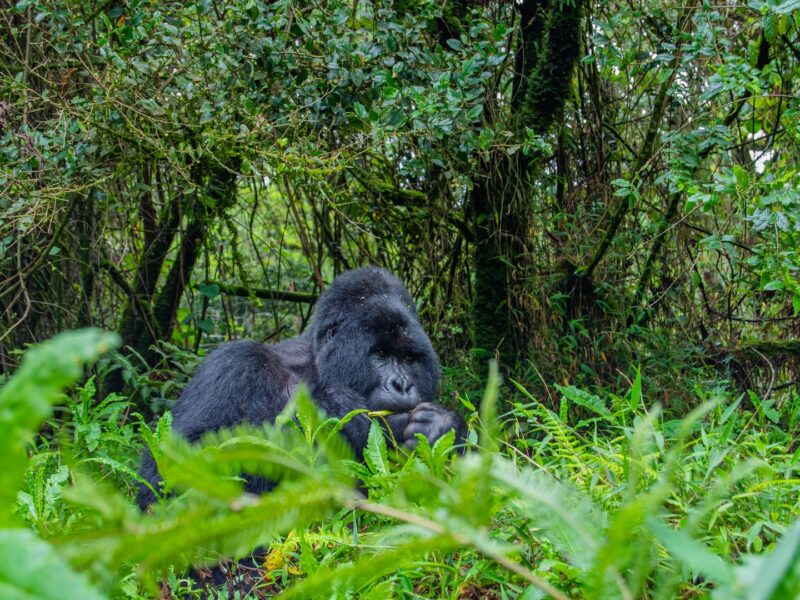
Travel Solo for Gorilla Trekking
July 16, 2025
Gorilla Trekking Permits in Uganda
July 17, 2025Why Is Flashy Photography Not Allowed During Uganda Gorilla Trekking?
A Deeper Look into Conservation, Respect, and the Spirit of Africa Gorilla Trekking
One of the first and most important rules every traveler hears before stepping into the dense, misty embrace of Bwindi Impenetrable Forest is simple but firm: “No flash photography.” But why is flashy photography strictly prohibited during Uganda gorilla trekking? The answer goes beyond mere etiquette and speaks to the heart of what makes Uganda gorilla trekking such a responsible and unforgettable adventure.
Mountain gorillas are incredibly sensitive creatures; sudden bursts of light can startle them, trigger stress, and in some cases, provoke defensive behavior from a silverback protecting his family. Beyond safety, flashy photography contradicts the conservation philosophy that underpins the entire gorilla trekking experience in Uganda.
At Ngeye Tours & Travel, we deeply understand that every click of the camera should be about capturing memory respectfully—not dominating the moment with disruptive technology. Visitors often discover that natural light, patience, and the quiet atmosphere of the Bwindi Impenetrable National Park create far richer, more authentic photographs than any artificial flash could offer.
In truth, the real beauty of Africa gorilla trekking is the stillness, the connection, and the raw, natural scenes that unfold before your eyes, unspoiled by intrusive light. These moments, etched in memory rather than overexposed by a flash, become the heart of every Uganda gorilla safari—a testament to traveling as guests rather than intruders in the gorillas’ ancestral home.
What Makes Bwindi Impenetrable Forest the Ultimate Uganda Gorilla Trekking Destination?
When travelers set out in search of the best gorilla trekking safari in Africa, the question naturally arises: What makes Bwindi Impenetrable Forest so special? The answer lies in a unique blend of biological wonder, unspoiled wilderness, and conservation success that few places on Earth can match.
As a UNESCO World Heritage Site, Bwindi Impenetrable National Park harbors nearly half of the world’s remaining mountain gorillas, making it the crown jewel of Uganda gorilla tours. This ancient forest has remained largely unchanged for thousands of years, its dense canopies and rugged valleys sheltering not only gorillas but also over 350 species of birds, dozens of mammals, and an intricate web of rare plants.
Walking into Bwindi is not simply a hike it’s a step into a living museum of biodiversity. The mist swirls around towering trees, sunlight filters through dense foliage, and each footstep leads deeper into a world untouched by modern noise.
The trek itself, challenging and unpredictable, adds to the sense of adventure: travelers often cross streams, climb steep ridges, and duck under ancient vines, guided by expert trackers who read signs invisible to untrained eyes.
And then, almost magically, the gorillas appear calm, majestic, and entirely at home in this tangled sanctuary. It is this raw, authentic encounter far from crowded viewpoints or artificial habitats that makes Uganda gorilla trekking in Bwindi the experience of a lifetime.
Why Is Uganda Gorilla Trekking Considered the Best Gorilla Trekking Safari in Africa?
For many travelers planning an Africa gorilla trekking adventure, the question becomes: Why is Uganda considered to offer the best gorilla trekking safari compared to places like Rwanda or DR Congo? The answer combines affordability, authenticity, and diversity. First, Uganda offers gorilla trekking permits at USD 800 per person (as of 2024), significantly lower than Rwanda’s USD 1,500. This cost difference doesn’t reflect a drop in quality; in fact, Uganda’s raw, wilder feel often appeals more to travelers seeking genuine adventure.
Secondly, Uganda gorilla tours often include the legendary Bwindi Impenetrable National Park, whose thick, ancient forest presents a trekking experience that feels closer to true exploration than a curated walk. While Rwanda’s Volcanoes National Park has shorter, more predictable treks, Uganda’s terrain offers a sense of discovery where each step is different and each encounter feels earned.
Finally, Uganda’s advantage lies in its broader safari experiences. A traveler can see gorillas in Bwindi, track chimpanzees in Kibale, spot tree-climbing lions in Queen Elizabeth National Park, and cruise the Nile in Murchison Falls all within the same journey. It is this unmatched combination of wildlife diversity, immersive landscapes, and cultural richness that cements Uganda gorilla trekking as the best gorilla trekking safari in Africa.
What Other Safari Experiences Can You Combine with Gorilla Trekking in Bwindi Impenetrable Forest Uganda?
A frequent question from travelers is: “What can I add to my gorilla trekking safari in Bwindi Impenetrable Forest to make my trip complete?” Uganda, blessed with stunning biodiversity and varied landscapes, makes it wonderfully easy to craft a safari that feels comprehensive and deeply rewarding.
After the magic of gorilla trekking safaris, many adventurers head to Kibale Forest National Park to meet our closest relatives: chimpanzees. The dense forests echo with the playful calls and drumming of these intelligent primates, offering another unforgettable wildlife moment.
For lovers of classic African wildlife, Queen Elizabeth National Park opens up golden savannahs and volcanic crater lakes, where elephants, buffaloes, and tree-climbing lions move under wide skies.
Further north, Murchison Falls National Park stuns visitors as the mighty Nile squeezes through a narrow gorge, sending powerful sprays into the air and creating rainbows in its mist.
Travelers seeking something truly remote and wild often journey to Kidepo Valley National Park, whose rugged beauty and sparse visitor numbers create an authentic frontier feel.
And between these iconic parks, Uganda’s landscape offers cultural visits, tranquil crater lakes, and moments of pure, serene beauty turning a Uganda gorilla safari into far more than a single highlight, but rather an unfolding story across an entire country.
How Do Cultural Tours Enrich Uganda Gorilla Tours?
In the villages bordering Bwindi Impenetrable National Park, communities like the Batwa offer travelers a window into a way of life shaped by the forest for centuries.
Once forest-dwelling hunter-gatherers, the Batwa now share stories of ancient survival techniques, traditional dances, and their spiritual bond with the land. These encounters are not tourist performances but living narratives that reveal resilience, adaptation, and pride.
Beyond the Batwa, visitors often explore local crafts, taste traditional Ugandan dishes, and learn how tourism directly supports schools, health projects, and conservation initiatives. This human element transforms Uganda gorilla tours from simple wildlife observation into a meaningful exchange.
Travelers return home not only with photographs but with an understanding of how protecting gorillas also means protecting communities and cultural heritage. In this way, cultural tours deepen the sense of purpose in every Africa gorilla trekking journey, reminding us that conservation is as much about people as it is about wildlife.
What Is the Real Experience of Gorilla Trekking Safaris in Bwindi Impenetrable National Park?
Many travelers set out for gorilla trekking safaris with visions of instantly finding gorillas among sunlit clearings. The reality, though, is both more challenging and more magical.
Treks often begin at dawn, with small groups gathering at the park headquarters for a safety briefing led by Uganda Wildlife Authority rangers. Guides explain why flash photography isn’t allowed, why visitors must keep a respectful distance, and how to behave when a curious juvenile gorilla moves closer.
The trek itself varies: sometimes it’s a short walk, but often it becomes a strenuous journey through steep ridges, slippery paths, and dense vines. Yet every rustle, every distant call, builds anticipation. And when trackers signal that the gorillas are near, the atmosphere shifts from effort to quiet reverence. Seeing a silverback resting among leaves, watching mothers groom their young, or observing juveniles tumble and play is profoundly humbling.
For one sacred hour, travelers share space with creatures who, despite their power, show remarkable gentleness. No cages, no barriers—just raw, natural connection. It is in these silent, breath-held moments that Uganda gorilla trekking reveals its true magic.
When Is the Best Time for Uganda Gorilla Trekking in Bwindi Impenetrable Forest?
A question often heard is: “When should I plan my gorilla trekking safari for the best experience?” Uganda’s climate allows for Uganda gorilla tours year-round, but the dry seasons from June to September and December to February are often considered the best.
Trails are less muddy, and photography is easier under clearer skies. Yet traveling during the rainy months (March–May and October–November) brings its own advantages. The forest turns a vibrant, almost mythical green, and visitor numbers drop, creating quieter treks where the mist feels even more enchanting.
Regardless of season, the gorillas remain in Bwindi year-round, and their daily rhythms change little. What matters most is planning early, especially as permits can sell out months ahead.
The team at Ngeye Tours & Travel helps travelers choose dates that fit both practical needs and personal dreams, ensuring your Uganda gorilla safari feels perfectly timed and deeply memorable.
Why Choose Uganda Gorilla Tours over Rwanda or Congo?
Cost, Experience, and the Broader Safari Journey
Many travelers considering Africa gorilla trekking compare Uganda, Rwanda, and DR Congo. Uganda’s primary advantage is affordability: at USD 800, permits cost almost half of Rwanda’s.
This savings often funds extra adventures chimpanzee tracking, cultural tours, or even a luxury lodge stay. But beyond price, Uganda offers what many call the “true trekking experience.” Bwindi Impenetrable Forest is famously dense and ancient, adding challenge and discovery that some find missing in Rwanda’s shorter treks.
Congo, while the least expensive, faces security and infrastructure challenges. Uganda strikes the balance: a safe, welcoming country with rich safari diversity beyond gorillas.
From the roaring Nile at Murchison Falls to the peaceful crater lakes of Fort Portal, a Uganda gorilla trekking holiday becomes a complete African story, not just a single chapter.
Why Uganda Gorilla Trekking Is More Than Just a Safari
Uganda gorilla trekking is more than a wildlife checklist it is an invitation to walk softly through an ancient world, to witness life that has survived millennia, and to remember our shared duty to protect it.
Prohibiting flashy photography isn’t just a rule; it symbolizes an ethic of respect—for the gorillas, the forest, and the future generations who will also hope to stand quietly among them. At Ngeye Tours & Travel, we craft every safari to honor this spirit, blending adventure with conservation and culture.
Travelers leave not just with photographs, but with stories of misty mornings, gentle giants, and the warm laughter of local hosts. They discover that the best souvenirs from the best gorilla trekking safari aren’t material things, but moments of genuine connection—to nature, to people, and to a deeper part of themselves. This, above all, is why Uganda remains at the heart of Africa’s most soulful and transformative travel experiences





